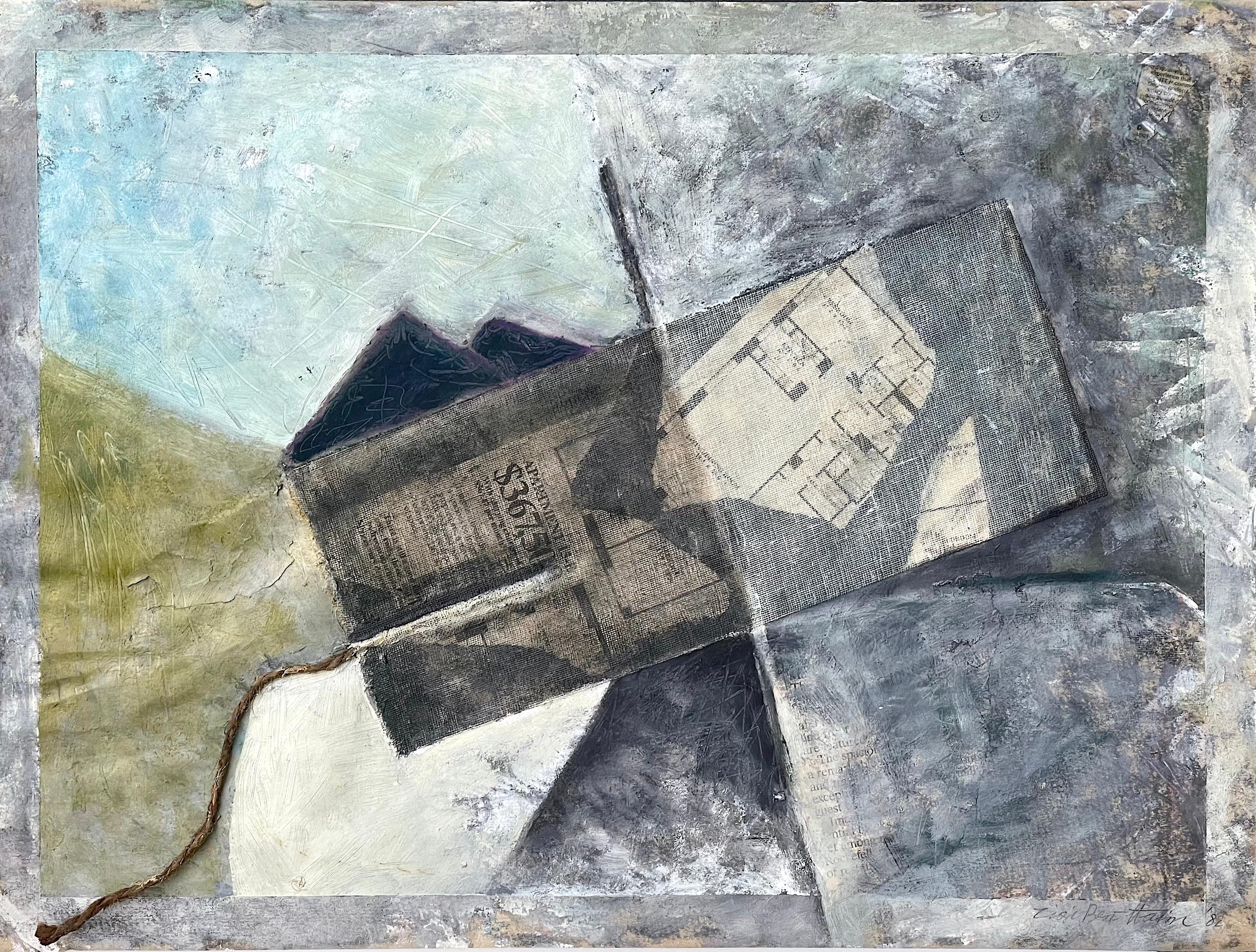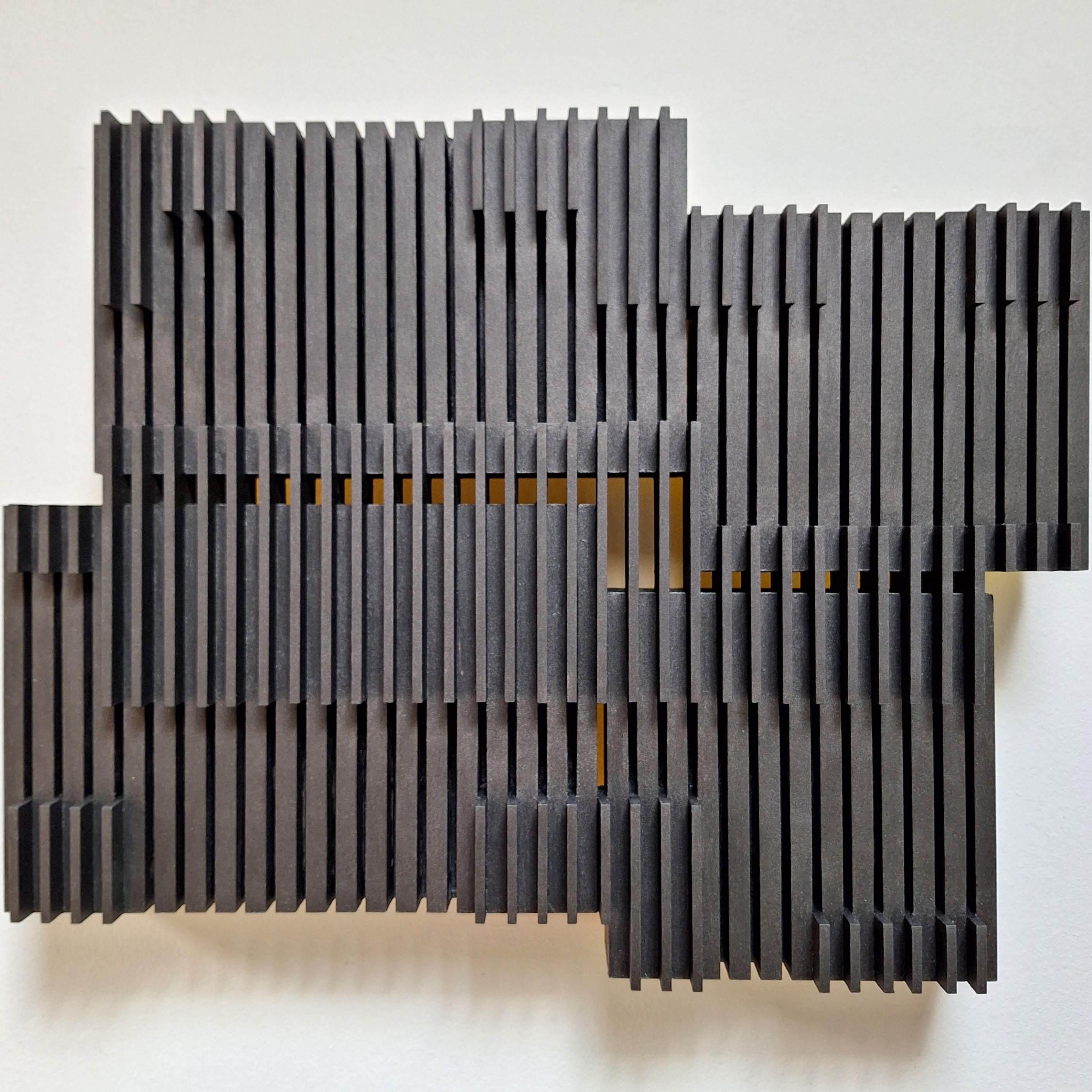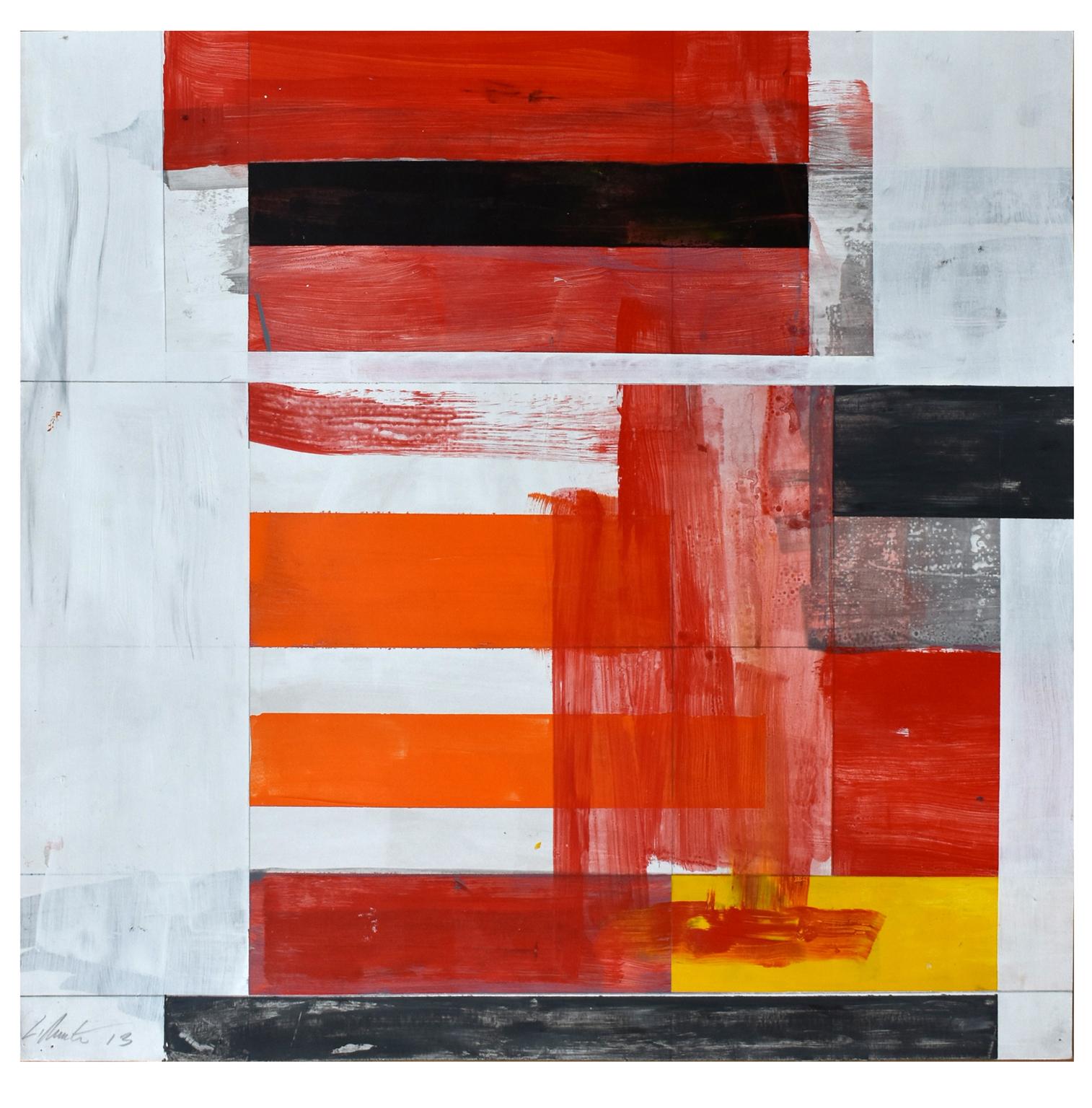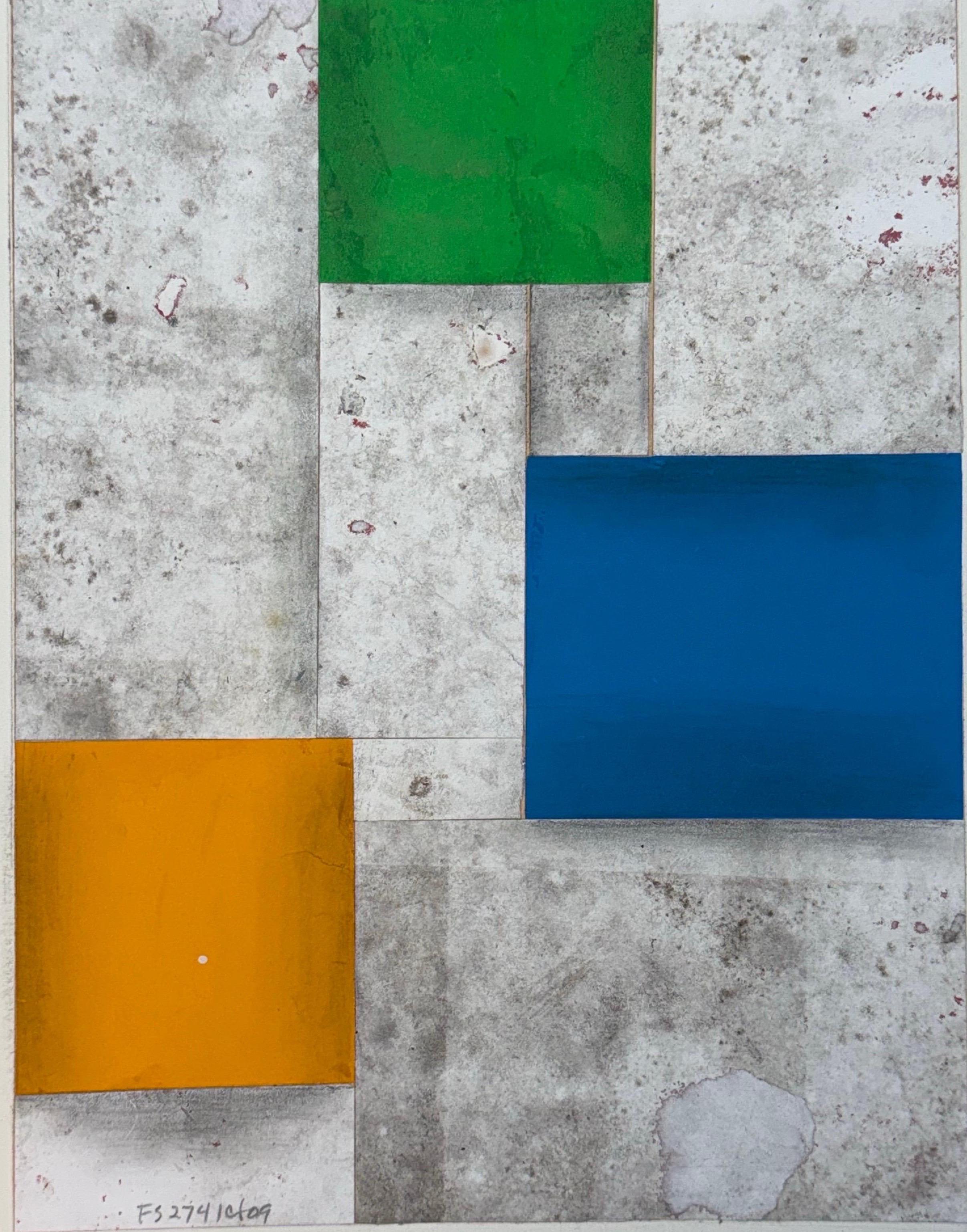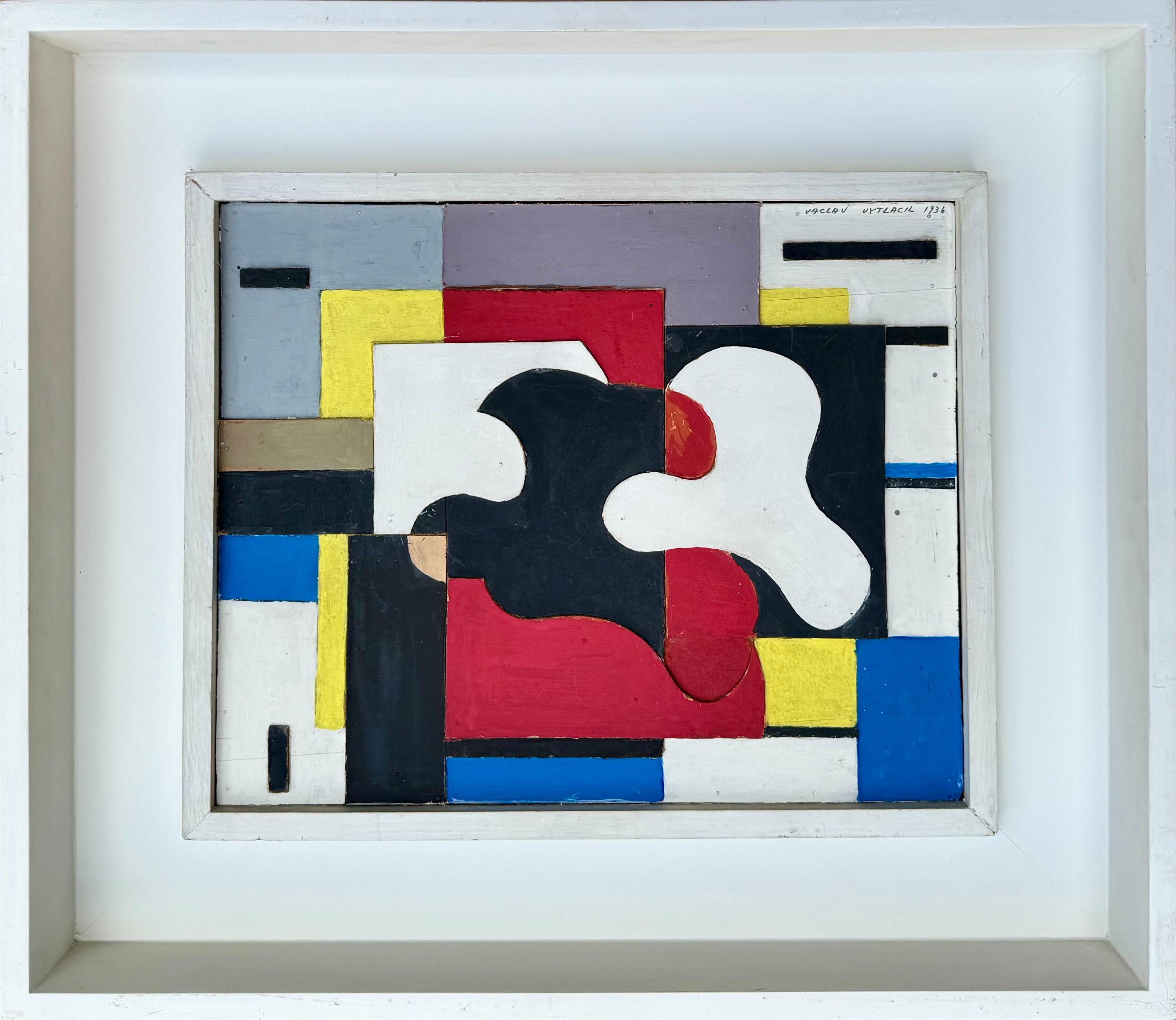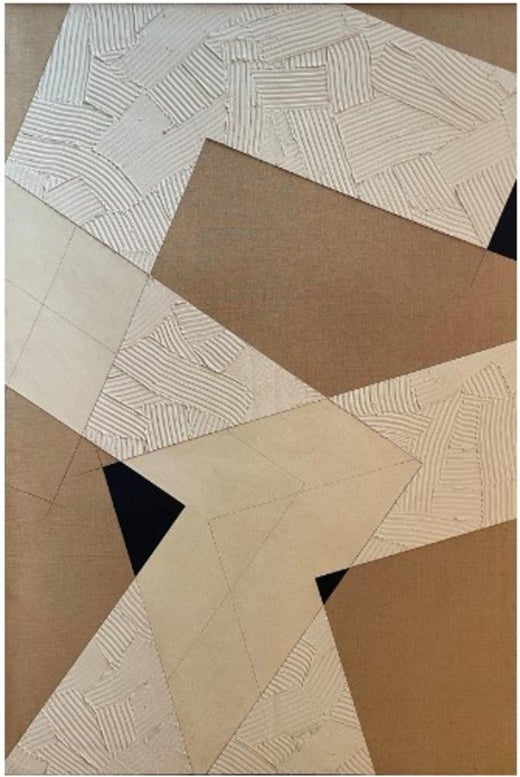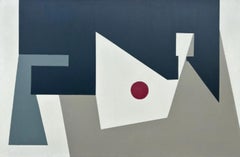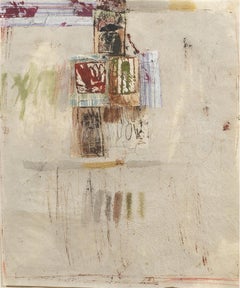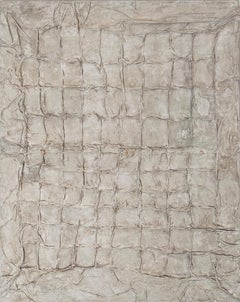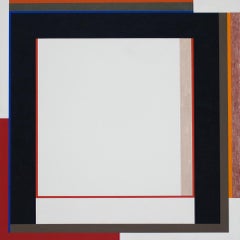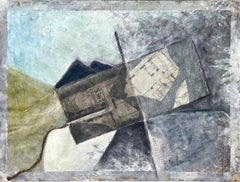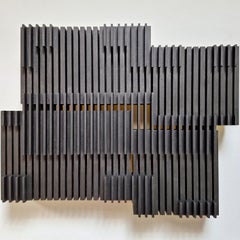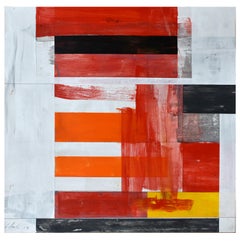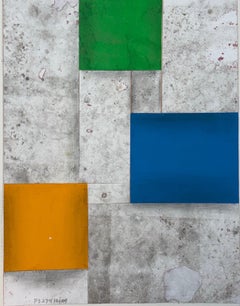Items Similar to "Villa Adrienne #17" Georges Noel, Constructivist, Architectural
Want more images or videos?
Request additional images or videos from the seller
1 of 8
Georges Noel"Villa Adrienne #17" Georges Noel, Constructivist, Architectural1976
1976
$23,200
$29,00020% Off
£18,121.04
£22,651.3020% Off
€20,542.36
€25,677.9520% Off
CA$33,259.80
CA$41,574.7520% Off
A$36,484.18
A$45,605.2320% Off
CHF 19,089.09
CHF 23,861.3620% Off
MX$434,234.40
MX$542,79320% Off
NOK 241,106.84
NOK 301,383.5520% Off
SEK 226,162.53
SEK 282,703.1620% Off
DKK 153,421.85
DKK 191,777.3220% Off
About the Item
Georges Noel
Villa Adrienne #17, 1976
Graphite, pigment, sand, and vinyl binder on canvas
Signed to verso
76 3/4 x 51 inches
The Pace Gallery label to verso
With restless strokes cutting into a dense mix of sand and pure pigment, Georges Noël works and reworks his surfaces, endlessly overlaying and eliminating in a return to the principle of the palimpsest. The tracks he leaves bring to mind both written script and mysterious shamanistic signs: all his life Noël sought inspiration in literature and the rites of archaic cultures.
A member of the Resistance during the war, then a draughtsman, he painted in isolation before moving to Paris in 1956. Represented by Galerie Paul Facchetti, he was marked by Informal Art and in particular the textures of Dubuffet, Brassaï and Fontana. In 1968 he moved to New York, where contact with Hard Edge and Minimalist artists led to a radically pared-down turn in his painting. Back in Paris fourteen years later, he returned, although in a more structured way, to his Informal explorations, which he also applied to sculpture.
A nomad at heart, he exhibited frequently in France – there were retrospectives at the Centre National des Arts Plastiques in 1985 and the Musée des Beaux-arts in Pau in 2007 – as well as in Europe and Japan.
- Creator:Georges Noel (1924 - 2010, French)
- Creation Year:1976
- Dimensions:Height: 76.75 in (194.95 cm)Width: 51 in (129.54 cm)
- More Editions & Sizes:Unique piecePrice: $29,000
- Medium:
- Movement & Style:
- Period:
- Condition:
- Gallery Location:New York, NY
- Reference Number:1stDibs: LU1841214453752
Georges Noel
Georges Noël was born in Béziers, France in 1924. He began his education as an engineering student and then studied both painting and sculpture in Pau from 1939-1945. An innovator of the art informal movement, and greatly influenced by Noveau Réalisme that emerged at this time, Georges Noël believes in gesture, objects and the accident. The imagery within each oh his paintings is inspired by primitive and archaic symbols, graffiti art and musical scores. After moving to Paris in 1955, his artistic career began to flourish, and it continued to accelerate when he relocated to the United States. Beginning in the 1950s and continuing through 2000 Georges Noël produced both canvases and works on hand-made papers, which were based on palimpsests. Palimpsests are old manuscript pages often made of parchment or vellum that have been written on, scraped off and then used again. During this process, the old writing would not be completely erased and would often still be visible. Georges Noël takes the concept of palimpsest pages and builds upon his canvasses with sculptural materials such as sand, crushed flint, and raw pigments bringing three dimensionality and vigor to each work. Georges Noël was a professor at the Minneapolis School of Art in 1969 and lived in New York from 1969-1983. He returned to Paris in 1983. The artwork of Georges Noël has been exhibited internationally and is included in the collections of the Metropolitan Museum of Art, the Bibliothèque Nationale and F.N.A.C. in Paris, and the Nationalgalerie in Berlin.
About the Seller
5.0
Platinum Seller
Premium sellers with a 4.7+ rating and 24-hour response times
Established in 2022
1stDibs seller since 2022
131 sales on 1stDibs
Typical response time: <1 hour
- ShippingRetrieving quote...Shipping from: New York, NY
- Return Policy
More From This Seller
View All"Composition" Balcomb Greene, Geometric Abstract, Early Modernist Composition
By Balcomb Greene
Located in New York, NY
Balcomb Greene
Composition, 1936
Signed Balcomb Greene on verso upper stretcher bar
Signed on backing board: Balcomb Greene
Oil on canvas
30 1/4 x 46 inches
Provenance:
The artist
A...
Category
1930s Abstract Abstract Paintings
Materials
Canvas, Oil
"Untitled (C82-142)" Hannelore Baron, Mixed Media Collage, Abstract
By Hannelore Baron
Located in New York, NY
Hannelore Baron
Untitled (C82-142), 1982
Signed and dated on the reverse
Mixed media collage
Sheet 12 1/4 x 10 1/2 inches
Provenance:
Manny Silverman ...
Category
1980s Abstract Mixed Media
Materials
Fabric, Paper, Mixed Media, Laid Paper
"Knickfaltung (Folded)" Herbert Zangs, Modernist, Folded Fabric, Textural Work
By Herbert Zangs
Located in New York, NY
Herbert Zangs
Knickfaltung (Folded), 1955
Signed and dated lower left
Cotton cloth folded and painted with dispersion
42 x 32 inches
Provenance
Private Collection, Krefeld, Germany
...
Category
1950s Abstract Mixed Media
Materials
Cotton, Paint
"Untitled" Elaine Lustig Cohen, Hard-edged, Geometric Abstraction, Modernist
By Elaine Lustig Cohen
Located in New York, NY
Elaine Lustig Cohen
Untitled, circa 1979
Acrylic on canvas
36 x 36 inches
Elaine Lustig Cohen was a New York–based, artist, graphic designer, archivist and rare book dealer. At the...
Category
1970s Abstract Geometric Abstract Paintings
Materials
Canvas, Acrylic
"Untitled" Larry Calcagno, Trompe-l'œil Mixed-Media Minimalist Composition
By Larry Calcagno
Located in New York, NY
Larry Calcagno
Untitled
Mixed media on canvas
36 x 23 1/3 inches
Lawrence Calcagno, better known as Larry, was an artist who gained notoriety during t...
Category
20th Century Modern Figurative Paintings
Materials
Canvas, Mixed Media
$4,800 Sale Price
20% Off
"Ouverture, with Cypress Forms" Stephen Edlich, Abstract Geometric Painting
By Stephen Edlich
Located in New York, NY
Stephen Edlich
Ouverture, with Cypress Forms, 1982
Signed, dated and titled on the stretcher
Acrylic paint, mixed media, and burlap on canvas
60 x 40 inches
An artist who worked in the post-cubist and constructivist traditions, Stephen P. Edlich gained a considerable amount of acclaim in the 1970s and 1980s for his collages, sculpture, and paintings. His promising career was cut short due to his untimely death at age 45 in 1989.
Edlich was born in New York City. He received his undergraduate degree with a major in fine arts studies from New York University in 1967. During his college years, he traveled to London, where he met the art dealer Victor Waddington and created his first white on white collage. In that same year, he attended a major exhibition of the work of Ben Nicholson, which would be influential source in his art. Edlich returned to England in 1967, where he met Barbara Hepworth and Patrick Heron in London and traveled to St. Ives, Cornwall, long a favorite artists' haunt. Edlich began creating acrylic reliefs...
Category
1980s Abstract Geometric Abstract Paintings
Materials
Canvas, Burlap, Mixed Media, Acrylic
$60,000 Sale Price
20% Off
You May Also Like
APARTMENT FOR SALE: 15-E, Abstract Mixed Media 3-D Collage, Real Estate Listing
By Zigi Ben-Haim
Located in Union City, NJ
APARTMENT FOR SALE: 15-E, created in 1982, is an original mixed media painted collage on paper by the Israeli-American artist Zigi Ben-Haim. APARTMENT FOR SALE: 15-E is an imaginativ...
Category
1980s Contemporary Mixed Media
Materials
Mixed Media, Acrylic
Symphonie verticale III modern grey black architectural painting relief
By Olivier Julia
Located in Doetinchem, NL
Symphonie verticale III is one of the latest medium size contemporary modern sculpture painting reliefs by French-Dutch artist Olivier Julia. The relief is made from 140 (!) individu...
Category
2010s Contemporary Abstract Paintings
Materials
Wood, Acrylic
Lloyd Martin, Untitled 13R13, Mixed Media, 2013
By Lloyd Martin
Located in Boston, MA
Artist: Lloyd Martin
Title: Untitled 13R13
Size: 22 x 22 inches
Medium: Mixed media, acrylic, pastel, graphite, collage on paper
Year: 2013
Price: 3,300
American artist Lloyd Martin...
Category
2010s Abstract Geometric Mixed Media
Materials
Acrylic, Graphite, Archival Paper
Original Collage on Paper Titled: Fs 2741 ct09
By Cecil Touchon
Located in West Palm Beach, FL
paper size: 15 x 19, art size: 9 x 12
Cecil Touchon Born 1956 Austin, Texas is a contemporary American collage artist, painter, published poet and theorist living in Pagosa Springs,...
Category
2010s Abstract Geometric Abstract Paintings
Materials
Acrylic, Laid Paper, Magazine Paper
Bauhaus Archiv en rombo. Futurist colorful abstract constructivist painting
Located in Segovia, ES
"Bauhaus Archiv in diamond". Futurist colorful abstract constructivist painting.
Acrylic paint, mixed media on panel. 2021
Dimensions in cm.: 104 x 178 cm. With frame 108.5 x 186 x ...
Category
2010s Constructivist Mixed Media
Materials
Mixed Media, Acrylic, Wood Panel
Abstract Cubist Construction Collage Mid 20th Century American Modernism Cubism
By Vaclav Vytlacil
Located in New York, NY
Abstract Cubist Construction Collage Mid 20th Century American Modernism Cubism
Vaclav Vytacil (1892 - 1984)
Abstract Construction #2
Caesin on board collage
11 x 13 1/2 th inches
S...
Category
1930s Abstract Abstract Paintings
Materials
Casein, Board
